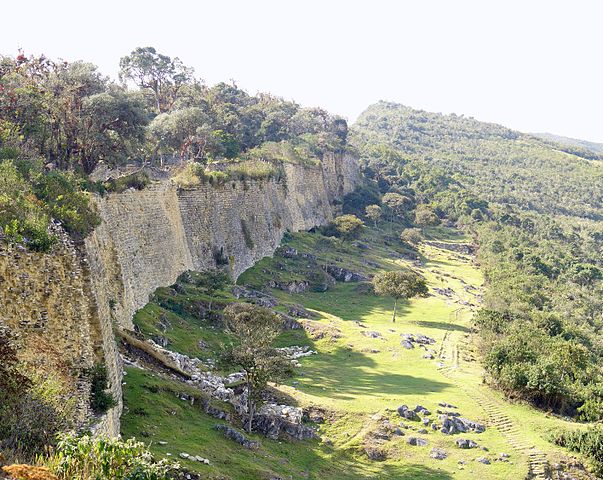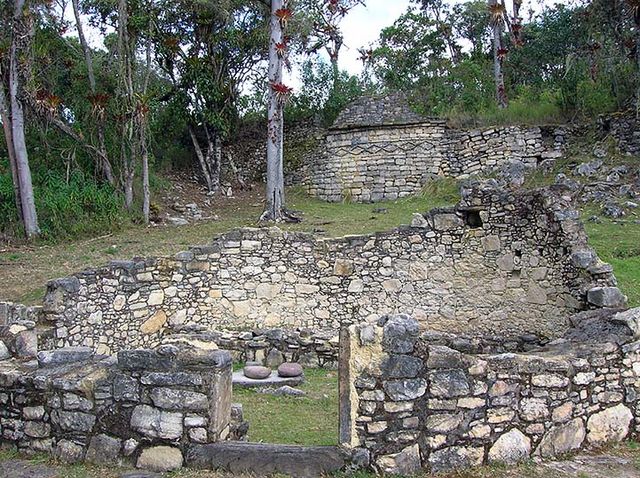Kuelap, near the town of Chachapoyas in the northeastern Andes of Peru, is a significant archaeological site of the mysterious people of the Chachapoyas culture (also known as the Cloud Forest People).
Kuelap is a walled city built in the 6th century AD at 3000 meters above sea level. The ancient city is situated on a hill that rises on the left bank of the Utcucamba river.

Kuelap is built on multiple platforms and is approximately 600 meters long and 110 meters wide. It is older and larger than the Inca’s Machu Picchu, but has not been completely explored or renovated.
The monumental ruins of colossal walls and complex interior architecture of more than four hundred buildings, most of them cylindrical, are evidence of its importance as an administrative, cultural and religious center of the Cloud People.
Even though the only surviving parts of the buildings are their grounds, decorative symbolic art can be still be seen today.


The Cloud People had white skin and blonde hair. This has been a source of confusion for historians, because native inhabitants of South America are typically darker skinned. The tribe once ruled over this area, before being conquered by the Incas.
The name they called themselves is unknown. The name Chachapoyas (Cloud People) was given to them by the Incas, because they lived in the Amazon rainforest, which is rich with dense clouds. The tribe later allied with the Spanish conquistadors against the Incas. But constant wars and disease of European origin, such as smallpox and measles, wiped them off the face of the Earth.

Because of the remote region in which Kuelap is located, it remained undiscovered until 1843. In that year, Juan Crisistomo Nieto visited the area and took note of Kuelap’s great size.
After that, Kuelap was examined by some European intellectuals, like Louis Langlois and Adolf Bandelier, who surveyed Kuelap at the beginning of the 20 century.

Before the archaeological discovery of the ruins, the pottery, and the tombs, the only source of information for the Chachapoyas were the Incan legends and the writings of the Spanish chronicles. For example, Spanish texts from the era describe the Cloud People as fearless warriors who mummified their dead.


In the 1990s, five tombs were found in a cave filled with rock paintings, ceramics, and other every-day objects of the Chachapoyas people. In 2010, remains of 79 human bodies were discovered inside a stone wall. In 2014, several mummies were discovered in a lagoon close to the ruins.
The area of the Amazon basin will surprise us in the future with more discoveries of the Chachapoyas culture; their legacy is protected by the forest, and nobody can easily steal even a little stone from their former kingdom.
.
